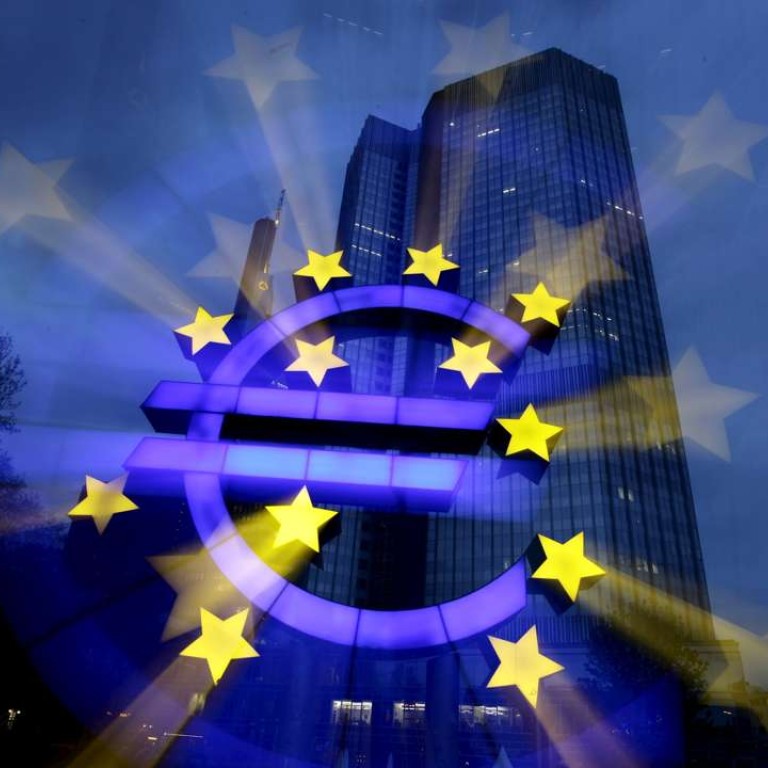
Are central banks still the only game in town?
For an indication of just how schizophrenic financial markets have become, consider the bizarre reaction engendered by the recent policy meetings of the Bank of Japan (BoJ) and the European Central Bank (ECB).
On Tuesday, the BoJ disappointed markets by keeping interest rates unchanged and refraining from expanding its asset purchases despite sounding more downbeat about the prospects for growth and inflation. Global equity markets fell while the yen continued its rise against the dollar – Japan’s currency has gained more than 6.5 per cent against the greenback since late January – which will make it more difficult for the BoJ to meet its 2 per cent inflation target.
Given the fierce backlash against the central bank’s unexpected decision to introduce negative interest rates at its previous meeting on January 29, a more positive reaction on the part of investors might have been expected – particularly given the BoJ’s efforts to mitigate the adverse impact of negative rates, partly by exempting money market funds.
READ MORE: Central banks and the markets: who’s guiding who?
However, in the bewildering Alice in Wonderland world of ultra-loose monetary policy, in which markets are rapidly losing confidence in the effectiveness of central banks’ policies yet are still clamouring for more stimulus, seemingly contradictory reactions should come as no surprise.
Markets may have given central banks’ negative interest rate policy the thumbs down – the shares of euro-zone banks, many of which are undercapitalised and suffer from low profitability, plunged 30 per cent in the first six weeks of this year and are still down 14 per cent since the start of 2016 – but this doesn’t mean investors no longer depend on central banks to stabilise markets.
The most conspicuous theme in markets right now (and the one which bodes ill for a meaningful and sustainable improvement in sentiment) is the troubling disconnect between the rapidly diminishing returns of ultra-accommodative monetary policy and investors’ enduring sensitivity to the policy responses of the world’s main monetary guardians.
While investors may be losing faith in the efficacy of monetary policy, central banks remain the only game in town in the absence of fiscal and structural reforms on the part of governments and at a time when the global economy is beset by a plethora of weaknesses and vulnerabilities – particularly in emerging markets.
The ECB, which delivered a barrage of stimulus measures last week, is acutely aware of the waning potency of its actions and is desperately trying to get as much as economic bang for its stimulus back.
Having given up on a weak exchange rate to help stimulate inflation and growth – the euro is now stronger against the dollar than just before ECB president Mario Draghi announced the latest stimulus package on March 10 – the ECB is now focused on buying corporate bonds and boosting bank lending by effectively paying banks to lend to businesses and households if they grow their loan books sufficiently.
In a sign of how markets still take their cue from the actions – or, in the case of the BoJ, inaction – of central banks, the yields on European investment grade corporate debt have fallen since the ECB’s meeting, indicating growing demand for the bonds of companies and banks. Euro-zone banking stocks were also given a boost, rising 6.5 per cent in the first two trading days following the ECB meeting.
READ MORE: Fed indecision throws central banks’ woes into sharp relief
Yet on Tuesday, general sentiment began to deteriorate again, partly because of the BoJ’s inaction but also because of renewed strain in commodity markets, showing just how fragile and short-lived central-bank-fuelled rallies have become.
In its latest Global Fund Manager Survey, published on Tuesday, Bank of America Merrill Lynch (BAML) notes that institutional investors now believe the failure of central banks’ ultra-loose monetary policies poses the biggest “tail risk” to the global economy – even more important than a devaluation of the Chinese renminbi and the threat of a US recession.
Yet investors’ fear of “quantitative failure”, as BAML calls it, is the flip side of market relief that monetary policy is likely to remain exceptionally loose for a considerable period of time.
On Wednesday, the US Federal Reserve struck a more dovish note by paring back its forecasts for further interest rate hikes this year – it now expects two, as opposed to four, additional rate hikes – on the grounds that “global economic and financial developments continue to pose risks.”
Equity markets and emerging market currencies rose following the Fed’s decision.
Market schizophrenia surrounding central bank policy is unlikely to wane any time soon.
Nicholas Spiro is a partner at Lauressa Advisory

